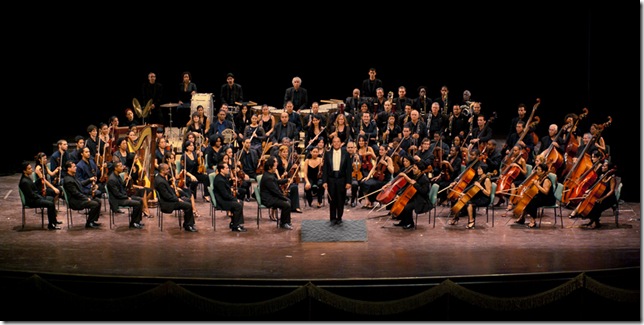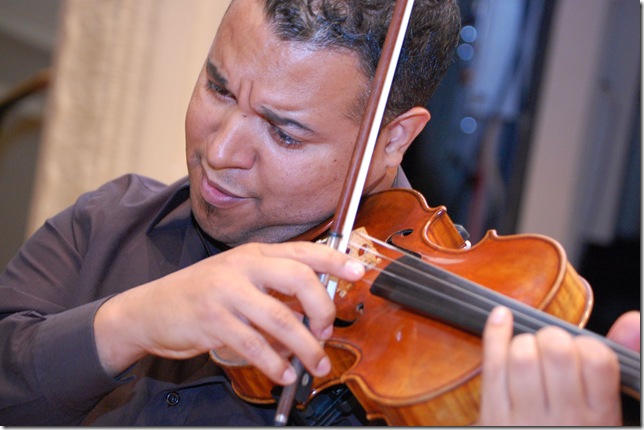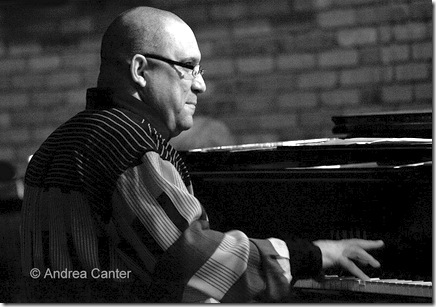From the protests outside the Kravis Center to the activists handing out literature on the way to the parking garage, the National Symphony Orchestra of Cuba drew plenty of outside attention Sunday afternoon as it wrapped up its first-ever American tour in West Palm Beach.
Our nation’s policy wrangles with the island nearby may be on the verge of a new easing, if some of the experts are right, which means that perhaps we’ll see this 52-year-old ensemble more frequently in the years to come. That would be good for us, and also for them.
The 70-piece orchestra brought a program of canonical classical works and plenty of elaborately orchestrated Cuban popular music to a half-full house in Dreyfoos Hall on Sunday afternoon that welcomed them warmly and enthusiastically. Unsurprisingly, this is an orchestra that doesn’t have the gleam and polish of one of the world’s orchestral superliners, but it is an accomplished, thoroughly professional ensemble nonetheless, with strong sectional unity and depth of player skill.
It also has kind of a rough-and-ready sound, lithe and spare, with a couple curious attributes that suggest the dance bands that made Cuban music so popular in the early to middle years of the past century: an always-forceful percussion section, and front-and-center trumpets that sounded even in the classical works as though they were playing in a jazz tradition.
Artistic director Enrique Pérez Mesa opened the afternoon with The Star-Spangled Banner followed by Cuba’s national anthem, La Bayamesa, and then began the concert with Gershwin’s Cuban Overture. A neglected piece for all its melodic charm and color, the orchestra had some difficulty finding its feet in the florid slip-and-slide harmonic structure of the introduction, but it soon settled into a comfortable groove. The bluesy appoggiaturas of one of Gershwin’s themes were handled quite deftly by the violins, in good American style, and the work’s high spirits and sunny demeanor were well-communicated by the orchestra.
Violinist Ilmar Gavilán, now based in the United States but born and trained in Havana, was joined by his father, conductor and composer Guido Lόpez-Gavilán, after the Gershwin overture for the Violin Concerto (in E minor, Op. 64) of Felix Mendelssohn. The relatively light scoring of this popular concerto suited the National Symphony well, and it accompanied Gavilán with taste and restraint.
Gavilán, a member of the Philadelphia Virtuosi and the Harlem Quartet, is an adept and excellent player, with a light, very Classical sound, and admirable digital dexterity. Intonation was something of a persistent problem, however, from those sliding diminished double-stops early on to the cadenza, and Gavilán tended to slide up to the apex notes of critical passages rather than nailing them cleanly; the purer approach, I think, is a better fit for Gavilán’s style and this music in general.
In the second movement, the soloist’s tone was tender and pretty, and in the finale there was less sliding and a sense of athletic enjoyment to his playing, boosted perhaps by his bright orange tie and the look of sheer performance bliss on his face. After the Mendelssohn, he offered a solo encore, a piece called Mi Menor Conga, which he said was written for him by his father. It’s a charming piece, starting with the conga rhythm hammered out in pizzicati, and an elegant minor-key conga tune decorated with streamers of scales, which Gavilan played expertly.
The second half began with an arrangement of Ernesto Lecuona’s La Comparsa, with orchestra pianist Vilma Garriga Comas as the soloist. Garriga Comas’s approach was Chopinesque, which gave this slight piece a touch of poetry before it expanded into something a little showier.
The Lecuona was followed by the Fourth Symphony (in A, Op. 90, Italian) of Mendlessohn. Pérez Mesa led this familiar symphony well, choosing brisk tempi and an overall interpretive approach that was right in line with standard readings of the work. The precision of those opening triplets left something to be desired, but in general ensemble was good throughout, with particularly fine contributions from the woodwinds.
After the Mendelssohn came Guaguancό, a work by Lόpez-Gavilán, who returned to the stage to conduct it. This is music that follows in the line of Lecuona but has much more ambition and a broader harmonic palette. It’s imaginatively scored, with lovely viola and horn solos, and a passage in the middle in which the rhythm of this particular kind of rumba is tapped out by the string players slapping the bodies of their instruments with their hands.
The chief melody is more of a fragment than a full tune, but it gets richly harmonized with big jazzy chords, and with improvisational solos thrown in, the work very effectively does what it set out to do: Give an enticing sound-picture and mood that keeps the listener engaged and interested.
Pianist Nachito Herrera, a genial host wearing bright red who for more than a decade has built a reputation in his adopted American home of Minneapolis for his work as a jazz artist, joined the orchestra after the Lόpez-Gavilán for an encore, the Danzόn of the short-lived Cuban composer and jurist Alejandro García Caturla. He’s a powerful and compelling jazz player, and his improvisation in the middle of the piece mounted to a bravura climax that drew shouts from the audience.
The National Symphony Orchestra of Cuba is new to the States, and this tour will no doubt have raised its profile in general. It is a strong, capable ensemble that knows how to do classical and Cuban pop styles effectively, and it was well worth hearing. One hopes that in the years to come, it will return with a program that doesn’t lean quite so heavily on the older-generation Cuban tunes.
Lopez-Gavilan’s piece showed that there is much sophisticated work you can do within the Cuban folk style tradition, and I for one would love to hear a concert of fresh music by the country’s younger composers. It’s not the orchestra’s fault that its easiest access to American audiences is through retro pop, but it is something that should soon be relegated to light-music concerts, so that this orchestra can go about the business of presenting much more urgent, relevant work.
Yes, the current political situation probably makes that too difficult. But it won’t last forever, and a more cutting-edge version of this orchestra is something discerning listeners can hope to hear before too long.


